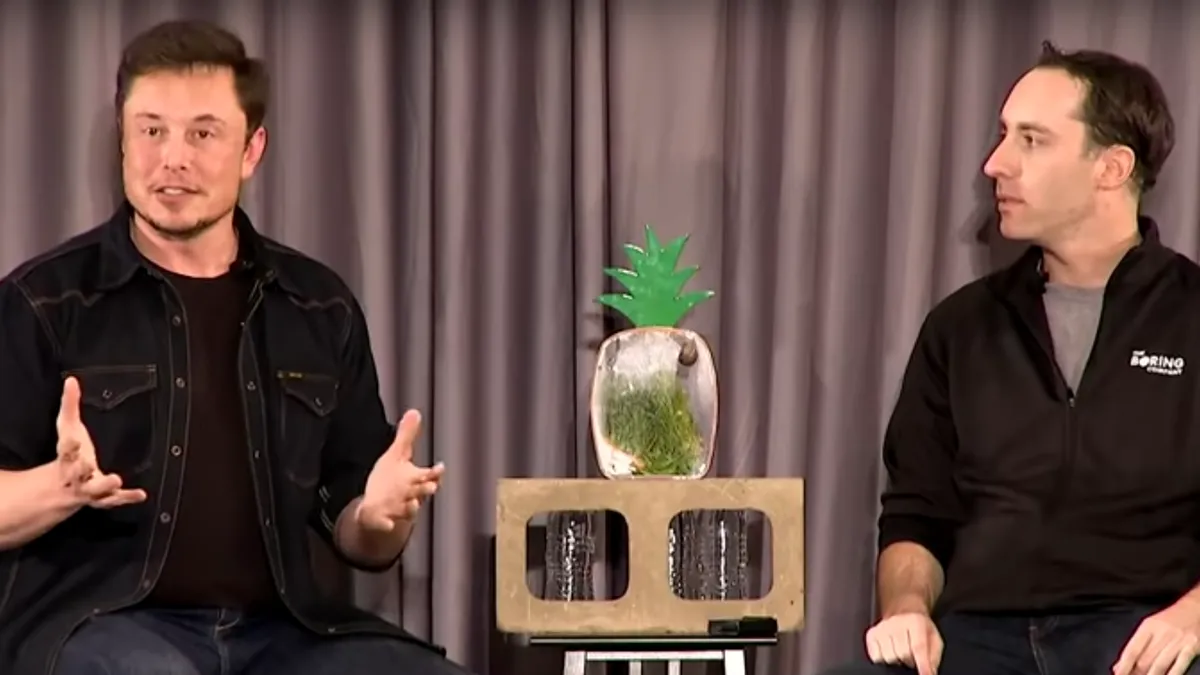Dive Brief:
- Elon Musk unveiled plans last week for The Boring Company's "Loop," an underground network of tunnels to accommodate pods that would travel up to 150 miles per hour.
- The Loop system would offer rides for just $1, with electricity-powered pods holding up to 16 people.
- The Boring Company is working on a 2.7-mile test tunnel on private land, which Musk said would allow the public to experience the pod system. LA Metro said it would coordinate with the tests and act as a partner on the project going forward.
Dive Insight:
Musk’s underground ambitions to defeat what he calls “soul-sucking traffic” are sky-high. The tunnel system could bring passengers from downtown to LAX airport in just 8 minutes for less than the cost of a bus fare. But the talk may run into harsh realities, given the complexities of constructing the tunnels at low cost without disturbing existing infrastructure. Carnegie Mellon University assistant professor Constantine Samaras told Forbes that "cutting holes in the street and dropping down through utilities all over town is not a great idea," adding "it’s expensive [and] it’s got maintenance problems."
The tests already face a lawsuit from community groups over Los Angeles’ decision to exempt the tunnel project from environmental reviews, especially given the potential seismic risk of tunnel digging. When asked during his Q&A Thursday, Musk said the company would do a full environmental impact report when it had reached a larger scale.
Musk — who once tweeted "Permits harder than technology" — has gotten significant support from California and Los Angeles officials in his quest to build out the tunnel and similar hyperloop intercity technology. The environmental review exemption could knock months or years off the project’s lifespan, pending the outcome of the lawsuit. Musk has also gotten similar support from the state of Maryland to build a hyperloop there. Still, more bureaucratic and legal delays are sure to arise as construction moves forward, and even Musk’s bullish talk about technology doesn't mean the projects are close to reality.











